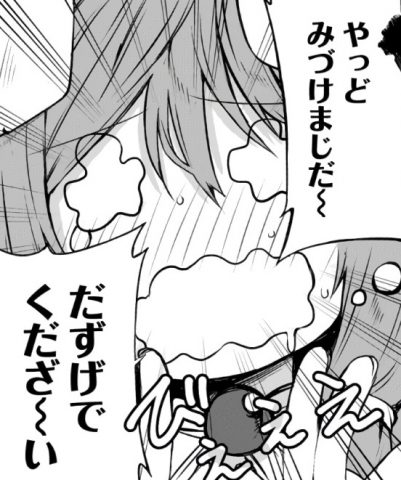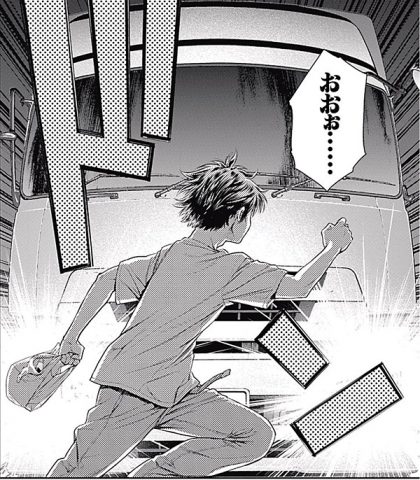The biggest highlight of the second season of the anime will undoubtedly be the fight against cancer cells, and the lactic acid bacteria we'll be introducing today will play a vital role in that battle! They have an adorable mascot-like appearance and are called "bacteria," but are they actually allies of the cells? Or the bacteria? The lactic acid bacteria were introduced without any clear indication. While the cancer cells and white blood cells are battling, the lactic acid bacteria are also fighting elsewhere, which will ultimately have a major impact on the fight against the cancer cells. In this article, we'll introduce the characters and work of these mysterious lactic acid bacteria!
Lactic acid bacteria meet ordinary cells
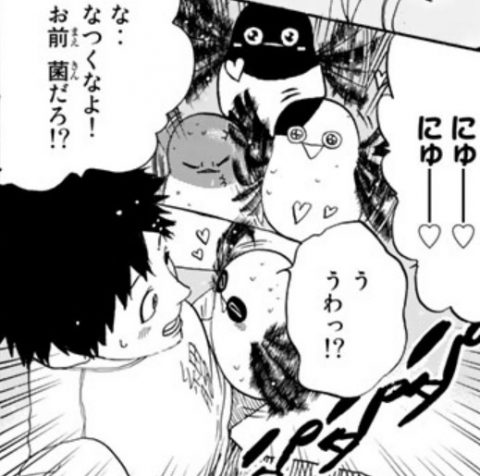
The bacteria are raging in the body as usual, and the immune cells are defeating them as usual. One day, the ordinary cell, who was watching this usual scene with boredom, found a bacterium drowning in a river. The ordinary cell thought, "I found something dangerous," and immediately informed the immune cell of the discovery of the bacterium. However, far from doing any harm, the lactic acid bacteria asked the ordinary cell for help. Although the ordinary cell tried to abandon them at first, his conscience made him feel bad and he decided to help them in the end. The four rescued lactobacilli were overjoyed with tears in their eyes, and they quickly became attached to the normal cells. By the way, these four lactobacilli were each a different color: black, red, panda, and spotted.
Normal cells trying to protect lactobacilli from immune cells

These lactobacilli look adorable and harmless, but the four rescued bacteria are still "bacteria". As long as they are bacteria, they will be killed immediately if they are found by immune cells in the body. The normal cells were called by the immune cells immediately after helping the lactic acid bacteria. They quickly hid the lactic acid bacteria in their clothes and told them to return to their world before they were found. However, the lactic acid bacteria continued to follow the normal cells and refused to leave. The normal cells said goodbye again, saying that they would get in trouble if they were seen with bacteria, but when they saw that the lactic acid bacteria were stuck in a ditch and unable to move, they ended up taking them home.
The white blood cells attack! Protect the lactic acid bacteria!

This normal cell has played tricks on the cold virus in the past, and if he is found with the bacteria again, he might not only be scolded but killed... While he is worrying about this, the intercom at his house rings. When he timidly peeks through the peephole, he sees a white blood cell covered in blood... It seems that the receptor (a device that detects bacteria on the head) has reacted to the lactobacillus and come, but the normal cell tries to pass it off by pretending not to be home. However, the lactic acid bacteria made a "nyuu" sound, which made the white blood cell stop, and thinking, "Maybe the cells are being attacked by bacteria," he kicked down the door and rushed inside. After listening to the whole story, the lactic acid bacteria understood the feelings of the normal cells, but since they could not let the bacteria run wild, they decided to take the lactic acid bacteria home with them, as they had "secured the antigens."
Lactic acid bacteria play a major role thanks to the efforts of Helicobacter pylori!
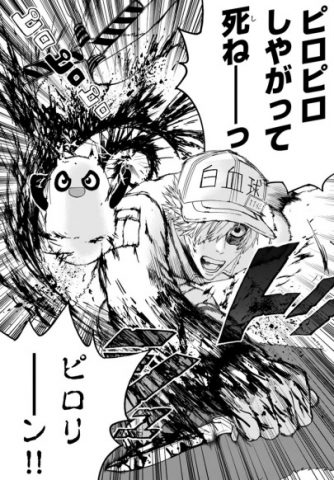
As the white blood cell left the house to take the lactic acid bacteria home, he suddenly received a call requesting help. The place where they requested help was the stomach. The Helicobacter pylori bacteria were running wild and out of control. The white blood cells rushed to the scene, but they were helpless against the Helicobacter pylori bacteria that were active in the stomach acid. The white blood cells, resigned to their deaths, tried to jump into the stomach acid to protect their bodies. The normal cells were hiding and watching their brave figure. However, when the walls inside the body collapsed due to the attack of the Helicobacter pylori bacteria, and the lactic acid bacteria were about to be crushed under the rubble, the normal cells jumped out and put their bodies on the line to protect the lactic acid bacteria. The lactic acid bacteria looked at them with shining eyes, grateful and worried. The panda-patterned lactic acid bacteria was sunk into the sea of stomach acid by the Helicobacter pylori's technique called "stomach acid hell", but it was not damaged by the stomach acid and was activated by its anger. It knocked the Helicobacter pylori out of the stomach acid and finally dealt the final blow together with the white blood cells. After that, it was discovered that this lactic acid bacteria was a "good bacteria", and the panda-patterned lactic acid bacteria, although reluctant to say goodbye, was pushed by the normal cells and left into the stomach acid where its friends were.
Lactic acid bacteria that eat purine bodies
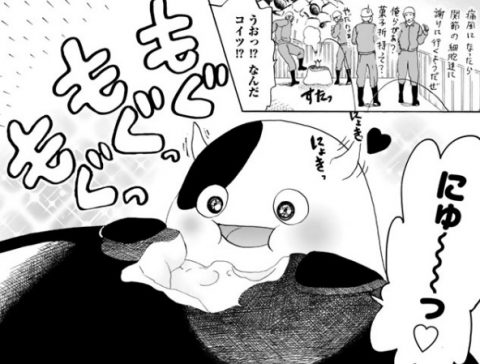
Purine bodies are essential for forming the nucleus of cells. After being broken down, they are usually excreted from the body as a waste product called uric acid, but if the amount of purine exceeds the amount that can be excreted, it will accumulate in the body and cause gout and ureteral stones. Purine bodies are now overflowing in this body, and the small intestine is in a panic. The spotted lactic acid bacteria's eyes lit up when it saw this! It vigorously jumped out from behind something and started munching away at the excess purines. After finishing one purine, the lactic acid bacteria cried out loud. Then, out of nowhere, a giant fellow lactic acid bacteria appeared and started to digest the purines one after another. The other cells were surprised at first, but were delighted by this work and soon became friends. It was time to say goodbye to the spotted lactic acid bacteria, who had safely reached its friends. The regular cells waved, and the lactic acid bacteria waved back happily as the regular cells headed off to the next location.
Where did the drifting lactic acid bacteria end up?
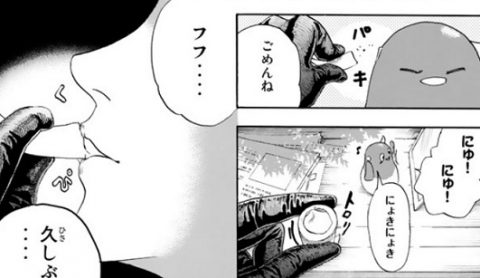
Two lactic acid bacteria are doing great things in the body, and ordinary cells are happy about themselves. Until then, they had been walking around hiding them as bacteria, but now they are happy to put them on their hands or heads. However, only white blood cell 1146 recognizes the lactic acid bacteria as harmless "bacteria." If other immune cells discover them, they may be killed immediately. (Lactic acid bacteria before activation are not recognized as good bacteria) While this is happening, the receptors of other white blood cells immediately react. The white blood cell frantically tries to hide it, but when he pushes the normal cell, the red lactic acid bacteria on its head falls into the river inside the body and is washed away.
The washed away lactic acid bacteria reach the dendritic cells
The normal cells and white blood cells were washed away into the river and could not be saved. All they could do was pray that the lactic acid bacteria would reach the "immune cells that consider them to be good bacteria". The lactic acid bacteria ended up at the dendritic cells' home. It seems that they were saved after collapsing in a drain. The lactic acid bacteria can release polysaccharides from their horns, and the dendritic cells ingest the polysaccharides and become activated. This helps to eliminate the antigen-mutated influenza that is raging inside the body. After that, the red lactic acid bacteria safely return to their friends. Now, only the black lactic acid bacteria remain.
The last remaining black lactobacillus

After sending the three lactobacillus to their proper place, only the black lactobacillus remains. And then they arrive at the large intestine, the battleground between cancer cells and immune cells. The white blood cells prepare for the battle against the cancer cells and separate from the general cells here. The general cells that have separated from the white blood cells head for the tip of the intestinal epithelium to come into contact with their lactobacillus friends. However, when they arrived at their destination, the intestinal epithelial cells seemed to be in a hurry... Soon the intestinal barrier was destroyed and the bad bacteria invaded the inside of the intestinal wall.
Will Kuro's lactic acid bacteria's powers be released when the normal cells are in a pinch...?
The normal cells are chased by the bad bacteria and run away. However, the bad bacteria's toxin attack causes the normal cells' legs to rot and they are unable to move. Kuro's lactic acid bacteria, trembling at the normal cells' pinch, jump on the bad bacteria and attack... but it is no use and they are knocked away. The normal cells, watching this, ordered the lactic acid bacteria to run away, and threw stones at the lactic acid bacteria that refused to run away, forcing them to escape. The lactic acid bacteria jumped into the water with tears in their eyes and ran away as the normal cells told them to.
Of course, it was the lactic acid bacteria that came to their rescue!
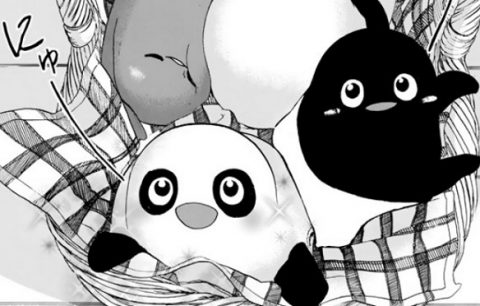
The white blood cells rushed to help the general cells in their pinch, but the bad bacteria made the "opportunistic bacteria" their allies and pushed back the white blood cells' counterattack with overwhelming numbers. However, immediately after that, a large number of lactic acid bacteria appeared from the sky with a rumbling sound. The three lactic acid bacteria that had been delivered so far also rushed to help, and the activated lactic acid bacteria quickly dominated the bad bacteria. The bad bacteria lost their power due to the lactic acid bacteria's efforts, which caused great damage (weakening) to the cancer cells that were fighting elsewhere.
So what are the characteristics of Kuro's lactic acid bacteria?
Unlike the other three, Kuro's lactic acid bacteria did not play an active role until the battle with the cancer cells was over. This is because Kuro's lactic acid bacteria only play an active role after the battle! The characteristic of Kuro's lactic acid bacteria is to repair the intestinal wall destroyed in the battle. In this way, the four lactic acid bacteria find their own roles and live in the intestinal flora.
Lactic acid bacteria play an active role in the intestines! Summary

What did you think of the introduction to lactic acid bacteria so far? Each of the four has a different role, and in the final battle against the cancer cells, they provide strong support, even if not direct. Keep an eye on the cute-looking mascot-like lactobacilli!


